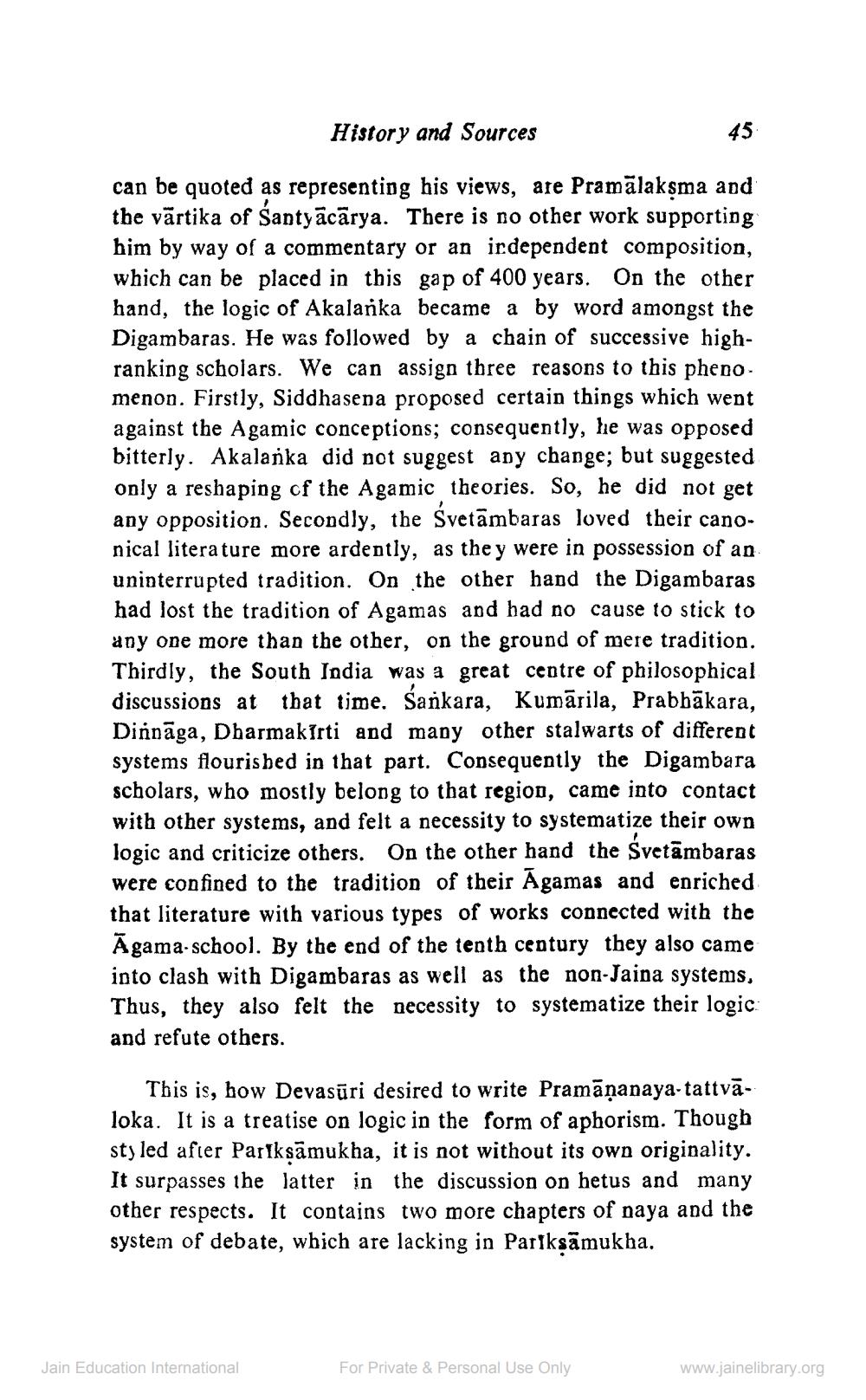________________
History and Sources
45
can be quoted as representing his views, are Pramālaksma and the vārtika of Santyācārya. There is no other work supporting him by way of a commentary or an irdependent composition, which can be placed in this gap of 400 years. On the other hand, the logic of Akalarka became a by word amongst the Digambaras. He was followed by a chain of successive highranking scholars. We can assign three reasons to this phenomenon. Firstly, Siddhasena proposed certain things which went against the Agamic conceptions; consequently, he was opposed bitterly. Akalanka did not suggest any change; but suggested only a reshaping of the Agamic theories. So, he did not get any opposition. Secondly, the Svetāmbaras loved their canonical literature more ardently, as they were in possession of an uninterrupted tradition. On the other hand the Digambaras had lost the tradition of Agamas and had no cause to stick to any one more than the other, on the ground of mere tradition. Thirdly, the South India was a great centre of philosophical discussions at that time. Sankara Kumārila, Prabbākara, Dinnāga, Dharmakirti and many other stalwarts of different systems flourished in that part. Consequently the Digambara scholars, who mostly belong to that region, came into contact with other systems, and felt a necessity to systematize their own logic and criticize others. On the other hand the Svetāmbaras were confined to the tradition of their Agamas and enriched that literature with various types of works connected with the Āgama-school. By the end of the tenth century they also came into clash with Digambaras as well as the non-Jaina systems, Thus, they also felt the necessity to systematize their logic: and refute others.
This is, how Devasūri desired to write Pramāṇanaya-tattvāloka. It is a treatise on logic in the form of aphorism. Though sty led after Parikṣāmukha, it is not without its own originality. It surpasses the latter in the discussion on hetus and many other respects. It contains two more chapters of naya and the system of debate, which are lacking in Parlksämukha.
Jain Education International
For Private & Personal Use Only
www.jainelibrary.org




